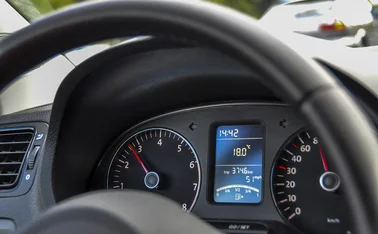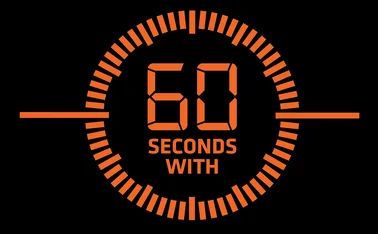
Roundtable: Autonomous driving systems need standards
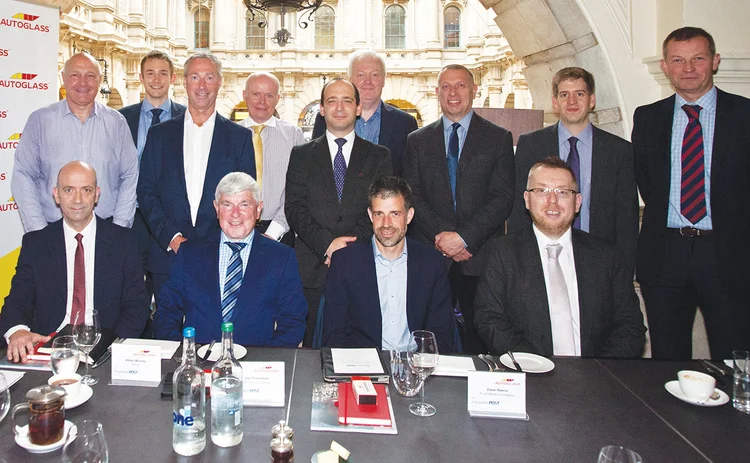
Need to know
- Many ADAS features rely on sensors located in the windscreen, making post-repair recalibration essential
- Insurers would welcome a central database that would list which vehicles are equipped with which technology
- Roundtable participants called for cross-industry collaboration to develop ADAS standards
Can insurers keep up with the pace of change powered by Advanced Driver Assistance Systems – especially when it comes to repairs? Post, in association with Autoglass, hosted an industry roundtable to find out
Advanced Driver Assistance Systems are shaking up the motor market, making cars smarter and safer. While it is expected to reduce the number of claims, this technology also creates new risks, particularly when a car is repaired: already, gaps in knowledge are showing up. So, can insurers keep up with the pace of change or have they already lost control?
ADAS encompass many functionalities: parking assistance, adaptive cruise control, lane departure warnings, pedestrian recognition, and even autonomous braking.
A Post roundtable, in association with Autoglass, looked at the challenges posed by these new technologies. Bringing together experts from automotive engineering and insurance, it sought to find ways to minimise the risks.
The roundtable took place the day after Thatcham Research issued voluntary code of practice on the recalibration of ADAS during the replacement or refit of windscreens. Indeed, most ADAS technologies rely on sensors and cameras mounted inside the windscreen, enabling a range of features such as Autonomous Emergency Braking.
Autoglass has forecast that by 2020, four out of 10 of its windscreen replacements will involve vehicles with ADAS. But cars come with various degrees of ADAS fitted and manufacturers use different systems – hence the Thatcham guidance. The insurer-backed body has advised on the necessary diagnostics, tools and skills for those fitting replacement windscreens.
 The roundtable attendees said they welcomed the ADAS glazing code of practice, saying it raised awareness of the importance of good practice and high standards.
The roundtable attendees said they welcomed the ADAS glazing code of practice, saying it raised awareness of the importance of good practice and high standards.
Recalibration is a key issue. If this is not done correctly, safety could be affected. Even a 1° misalignment may cause the system to misjudge braking distances or where the edge of a motorway lane is, with potentially serious consequences for the driver and other road users.
Asked whether insurers would cover the extra cost of recalibration when a windscreen is replaced, Adam Murray, motor technical manager at Aviva, was quick to say he did not see them changing their current position, stating they would indemnify the customer completely as before.
Others agreed, including Mark Sherman, manager for commercial motor at Allianz, who said: “We put customers back in the position they were in before. This won’t change. That said, I want to see more work done in this area, such as a new standard for repairs being developed.”
Some aspects of ADAS are not new as they have been a feature of high-end cars for a number of years. But as the technology becomes mainstream, there will need to be better understanding across insurers, repairers and consumers.
As Paul Middle, global telematics partnering director at RSA, pointed out, many customers have little or no awareness of what their car contains in the way of ADAS technology and this is particularly the case in the used car market. The owner may be unaware their windscreen has been replaced, and would probably not know whether it has been recalibrated correctly or not.
Mark Dibley, senior manager at The Co-operative Insurance, agreed the majority of consumers had limited understanding of their vehicle’s safety features. He pointed out that Co-op research found that only 30% of customers knew what the European New Car Assessment Programme was. He added there is more knowledge of airbags and anti-lock braking systems, but these have been around for many years – ADAS is far more diverse and technical. “There is a great deal of confusion and no standard methodology,” he said.
Boosting education
Dibley called on insurers and other stakeholders to do more to boost education among drivers. This will not be easy, however, given that fleet drivers, for example, may only have a car for a relatively short time before switching and in addition there is much diversity within the driving population.
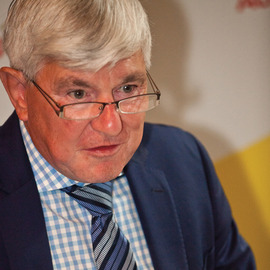 Equally, claims and underwriting staff could also be in the dark. As Dan Freedman, director of motor development at Direct Line, said: “This is one of the biggest challenges we face. We don’t know what technology is in a car. This is an important gap, which is going to have an increasing impact.”
Equally, claims and underwriting staff could also be in the dark. As Dan Freedman, director of motor development at Direct Line, said: “This is one of the biggest challenges we face. We don’t know what technology is in a car. This is an important gap, which is going to have an increasing impact.”
Beyond this, he pointed out that there is scope for ADAS to have a considerable impact in terms of underwriting, “but if we don’t know what is in the car, we can’t take it into account”.
Murray added many claims people don’t drive, have almost no knowledge of cars, and so cannot properly engage with repairers or customers.
There is also a knowledge gap in terms of repairers. As Chris Davies, head of technical research and innovation at Autoglass, explained, a windscreen replacement is now “requiring more technical capacity and is becoming much more complex”. Murray agreed there should be a “standard for fitting glass”, which would provide insurers and their customers with reassurance that the fitter had the necessary skills.
Middle added there remained a great deal of variation between garages and their workforce skills. Currently, as Dave Reece, collision project manager at Ford, noted, a car could be taken abroad and repaired, for example, and an insurer – or new buyer – would be none the wiser.
Sherman reiterated there need to be better ways for making checks, through certification and verification.
Finally, even those selling cars may not be fully cognisant of ADAS. Participants pointed out while there may be more standardised training at dealerships, those which are franchised or selling used cars may know far less about what is fitted.
And Andrew Marsh, director of Auto Industry Consulting, said that manufacturers should also be cautioned about the guidance they were giving consumers on ADAS. “There is a lot of promotion going on about safety systems, but some of this technology is at a very low level. We are seeing a divergence and people do not have the knowledge to make the right choices.”
Dibley said that there could potentially be more standardised details made available, similar to those that are shown on consumer white goods, although other attendees felt this would still not go far enough.
While the Driver and Vehicle Licensing Agency holds driver and vehicle information as listed on licences and the vehicle registration document, this does not cover ADAS. This means there is no central resource for insurers on technology installed in cars.
Also, as Richard Cuerden, chief scientist at the Transport Research Lab, emphasised, while specifications are detailed for those buying a new car, they are likely to be lost or diluted once it is re-sold.
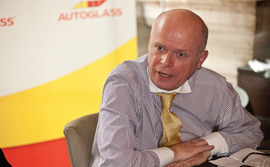 Further, with customised options available on new cars, customers have many choices available and the variations on individual cars are not available on any central resource.
Further, with customised options available on new cars, customers have many choices available and the variations on individual cars are not available on any central resource.
There is also the question of whether the technology needs to be subject to regular testing and how often this should take place. Could the current MOT test be used to assess ADAS?
While systems may be in perfect working condition when they leave
the manufacturer, or after a windscreen-replacement recalibration, flaws can develop as the vehicle ages.
Freedman noted: “The MOT is there to pick up wear and tear. But there is a difference between assessing traditional roadworthiness and seeing how robust the ADAS is. A test is needed.”
But how this could be extended to the MOT remained unanswered. There remained too many unanswered questions as to how often this should be done and what format it should take.
Besides, Davies said, a quick test would be insufficient: “You would need to do a full calibration to know everything is working.”
Cuerden reported that a European Union project is working on a diagnostic box for ADAS systems, so this could be an option for the future.
While initiatives such as My Licence exist, where drivers can search for quotes while insurers can get their DVLA information, there is nothing on car specification. Marsh believed producing a database on which vehicles contain what technology would be “a big but not impossible task”.
He added that Europe would also value such information and would probably want to use any data. “We are seeing a convergence of legislation around the world, so this is the right time to be working on data.”
But major data gathering projects involve cost and insurers are unlikely to want to commit to this, given the low profitability that exists in motor. As the Association of British Insurers’ policy adviser Ben Howarth stressed, there is still limited data on how big the ADAS ‘problem’ is in terms of risk. “We don’t know if there are going to be a lot of accidents because of mis-calibration or how often there will be mis-fitting. We need a better picture.”
An impossible task
Yet Cuerden said obtaining better post-crash data linked to ADAS would be a nigh on impossible task. “We study accidents in-depth and around 4% are linked to vehicle defects. But if a windscreen is all broken up, as can often happen following a crash, then we won’t know what impact the technology had.”
Howarth added he supported using ADAS data to help underwriters, but that it needed to make sense from a cost point of view. Without this, it would not be possible to pass on connected savings to relevant customers.
He continued: “In some ways we have two conversations going on. The first: that this technology is great for safety. The next: that we have worries about it, we need to know more.”
Davies noted that, with the different technology and materials involved in newer cars, harmonising repair standards would be exceptionally difficult.
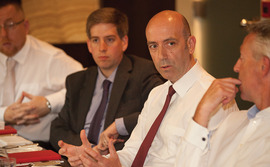 Freedman meanwhile pointed out, while more data linked to ADAS and accidents would be hugely valuable, it should still be remembered that repairs generally cost the industry less than bodily injury.
Freedman meanwhile pointed out, while more data linked to ADAS and accidents would be hugely valuable, it should still be remembered that repairs generally cost the industry less than bodily injury.
Finding ways forward would require a collaborative effort, it seems. Dibley said: “Manufacturers and insurers have a common interest in that they share the same goal to protect the consumer. It makes sense that we work together.”
Given there are so many uncertainties with ADAS, attendees were asked if they felt it could even push up premiums.
Commentators believed this was unlikely. Reece emphasised this technology was already making cars safer, with many fitted vehicles well ahead of current legal requirements.
Cuerden said there were no new ADAS features in the pipeline, although autonomous cars would be trialled in Coventry next year.
Yet Reece called on the industry to be less focused on fully autonomous cars, which he said are still “10 to 20 years off, and to focus on the now”.
He added: “This means dealing with ADAS and the fact that there are going to be many types of cars on the road and they need to be repairable.”
Broadly, attendees want to see ADAS expand and Cuerden said he would like to see systems such as AEB introduced as standard.
Barnaby Simkin, technological manager at the Society of Motor Manufacturers and Traders, added ADAS telematics had a hugely important role to play but manufacturers needed to be mindful of the way systems intervened. “There has to be greater understanding from drivers as to how the technology works and how it can protect them, but it should not be so intrusive and distracting that they want to turn it off.”
Tightening standards
There are also strong calls for tightening up repair standards, whether through certification and/or mandatory training.
As Dave Foster, senior motor engineer at Covéa, said: “We do not want to see customers getting into cars where there may be a problem. I believe that some repairs are only being partially done, because of a lack of knowledge from the repairer. We need action to be taken here.”
Insurers and motor manufacturers have not always had the easiest of relationships and indeed have viewed each other on occasion with distrust but this may need to be addressed in the future.
Reece concluded: “This is the time for insurers and manufacturers and other parties to sit down and have a sensible conversation. I hope this event will be a springboard for collaboration. When it comes to fitting windscreens, the repercussions of getting things wrong are far more serious. This is the time for people to put their heads together. Let’s look at areas like standards and work more closely. There would be a cost, but it would be worth it.”
Only users who have a paid subscription or are part of a corporate subscription are able to print or copy content.
To access these options, along with all other subscription benefits, please contact info@postonline.co.uk or view our subscription options here: http://subscriptions.postonline.co.uk/subscribe
You are currently unable to print this content. Please contact info@postonline.co.uk to find out more.
You are currently unable to copy this content. Please contact info@postonline.co.uk to find out more.
Copyright Infopro Digital Limited. All rights reserved.
You may share this content using our article tools. Printing this content is for the sole use of the Authorised User (named subscriber), as outlined in our terms and conditions - https://www.infopro-insight.com/terms-conditions/insight-subscriptions/
If you would like to purchase additional rights please email info@postonline.co.uk
Copyright Infopro Digital Limited. All rights reserved.
You may share this content using our article tools. Copying this content is for the sole use of the Authorised User (named subscriber), as outlined in our terms and conditions - https://www.infopro-insight.com/terms-conditions/insight-subscriptions/
If you would like to purchase additional rights please email info@postonline.co.uk
Most read
- Aviva CEO warns home insurance premiums need to go up
- Integration and restructuring costs push RSA to 2023 loss
- Which urges FCA to take action on premium finance following investigation



